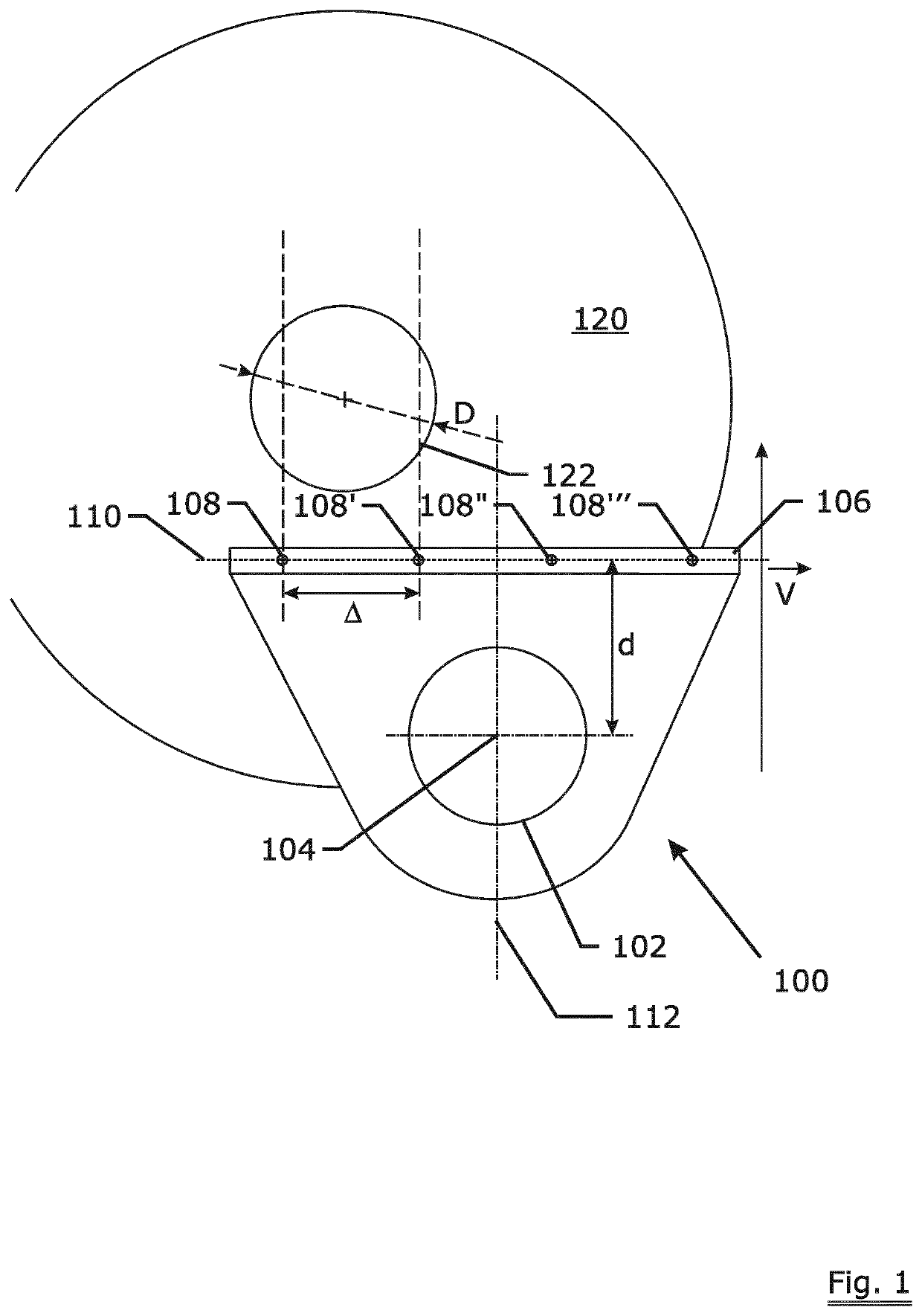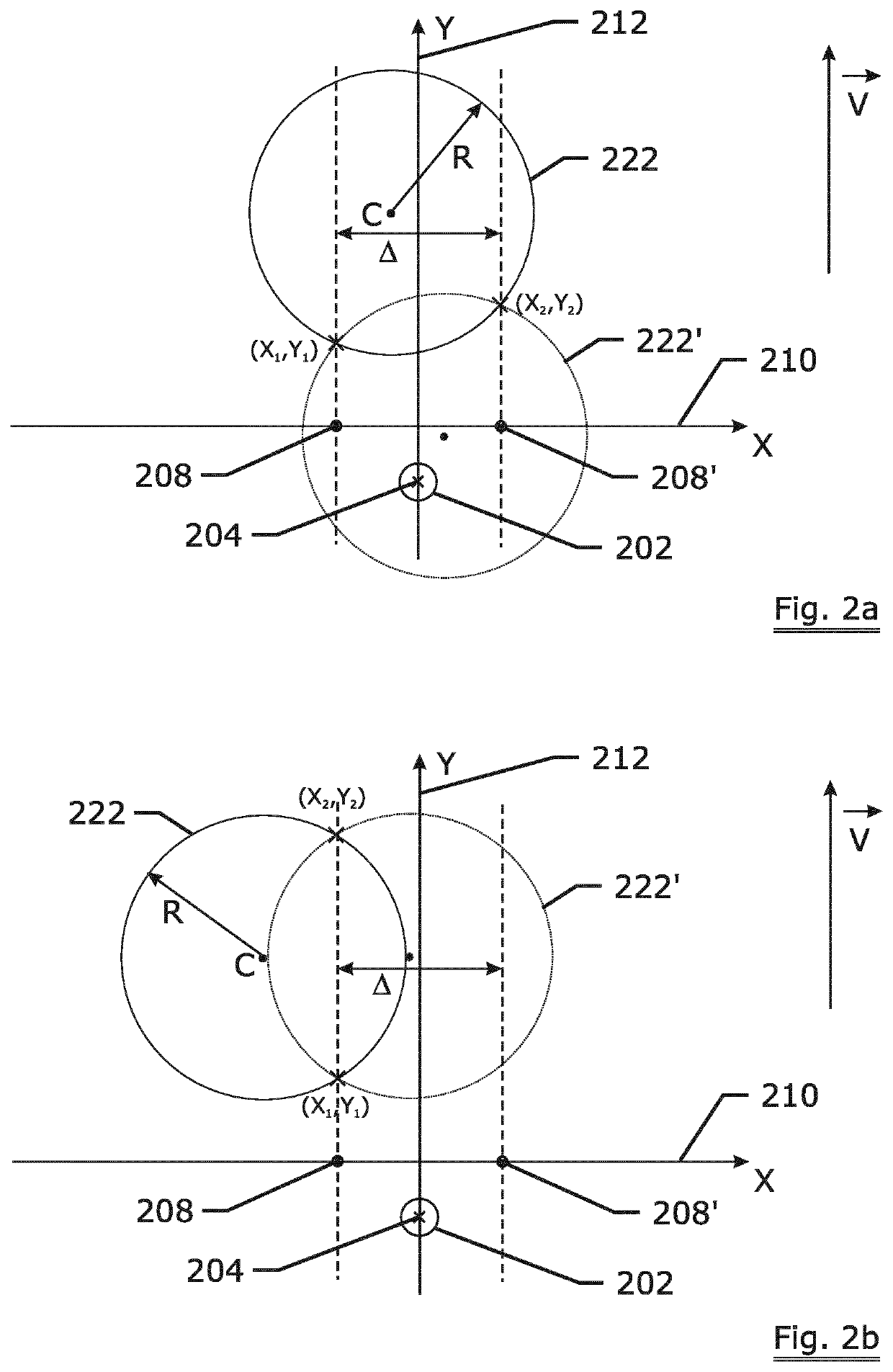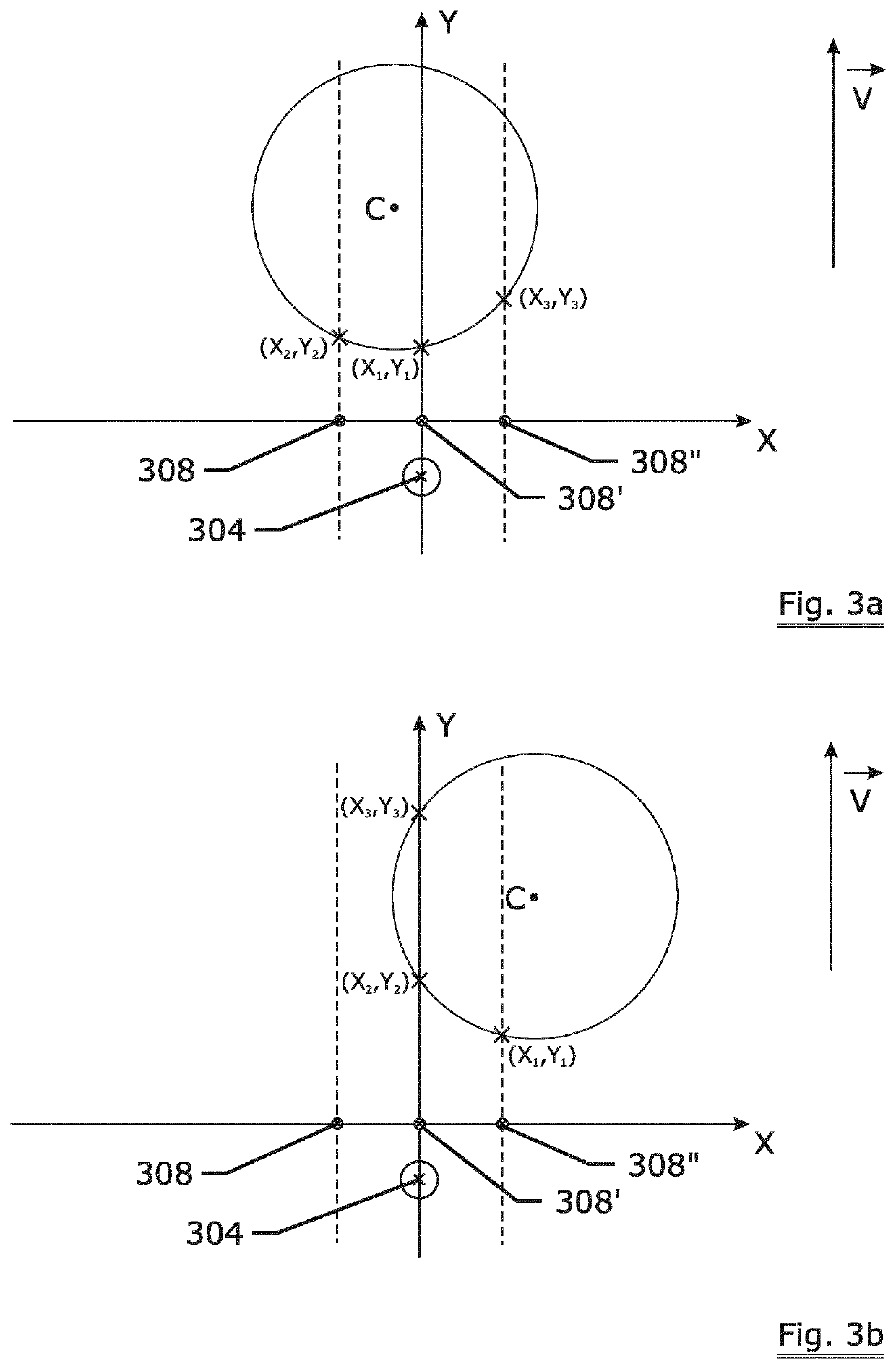Gripper for spools
a spool and spool technology, applied in the field of spool grippers, can solve the problems of complex and dynamic production environment, time-consuming location of the centre, and use of relatively expensive ccd cameras
- Summary
- Abstract
- Description
- Claims
- Application Information
AI Technical Summary
Benefits of technology
Problems solved by technology
Method used
Image
Examples
Embodiment Construction
[0057]FIG. 1 shows a view from above of a general embodiment of the gripper 100. The gripper comprises a driveable clamp 102 that is mounted on an arm of a robot or automatically guided vehicle or similar device (not shown). The clamp 102 has a reference axis indicated with 104 that is in this case perpendicular to the plane of the sheet. The spool to be gripped is shown as 120 and has a circular grip part 122 that is in this case the bore hole of the spool 120. The circular grip part 122 has a diameter indicated with ‘D’. The clamp size—corresponding to the diameter of the clamp 102—is thus slightly less than D in order to allow insertion of the clamp into the bore hole. The gripper has a scanning system 106 comprising four sensors indicated with 108, 108′, 108″, 108′″ on a line 110. The sensors are separated from one another by a distance ‘Δ’. The distance A is just less than D / 2 for example 0.45×D. The sensors sense the presence or absence of the spool body 120 in a direction par...
PUM
 Login to View More
Login to View More Abstract
Description
Claims
Application Information
 Login to View More
Login to View More - R&D
- Intellectual Property
- Life Sciences
- Materials
- Tech Scout
- Unparalleled Data Quality
- Higher Quality Content
- 60% Fewer Hallucinations
Browse by: Latest US Patents, China's latest patents, Technical Efficacy Thesaurus, Application Domain, Technology Topic, Popular Technical Reports.
© 2025 PatSnap. All rights reserved.Legal|Privacy policy|Modern Slavery Act Transparency Statement|Sitemap|About US| Contact US: help@patsnap.com



